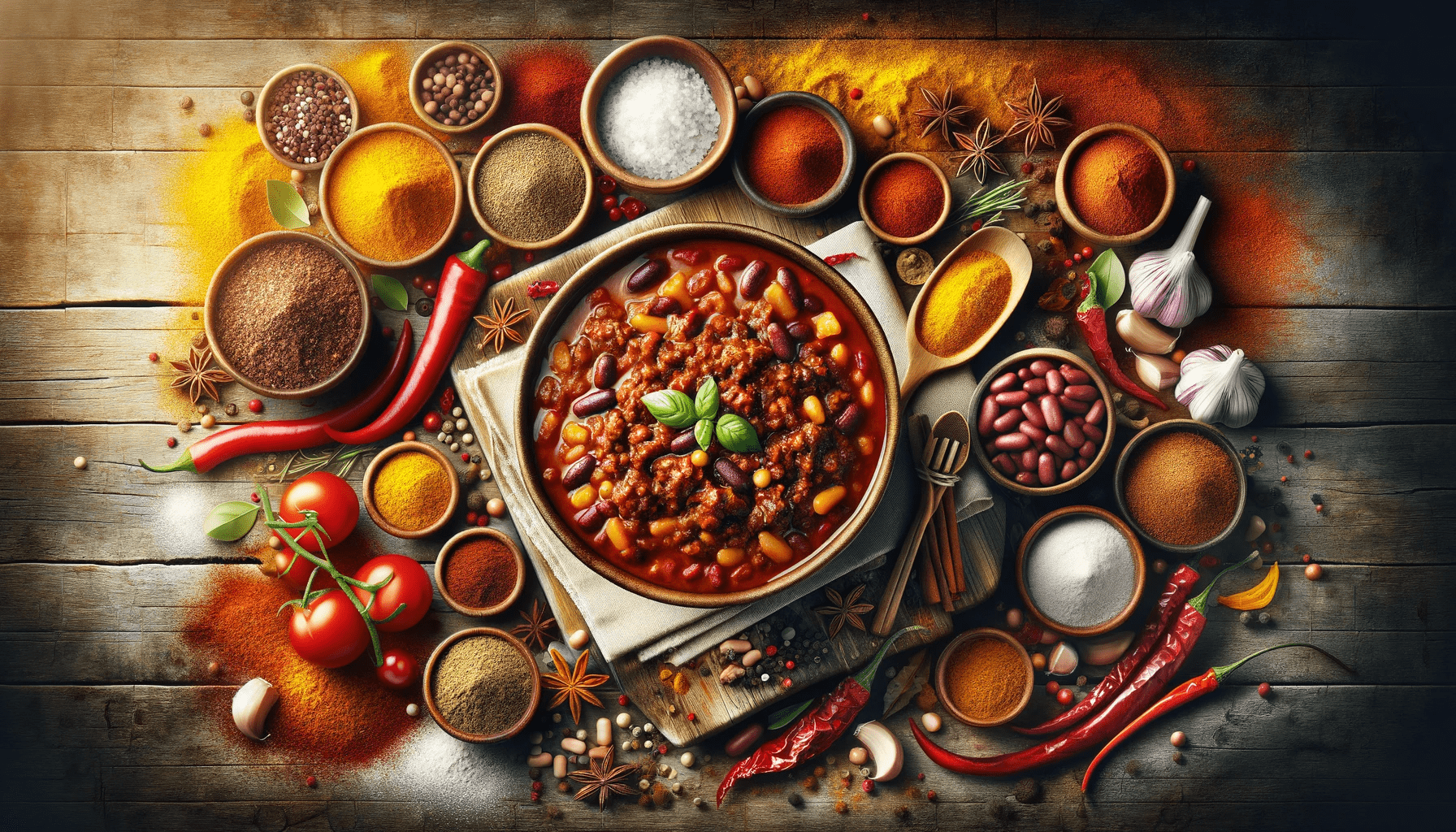Chili con carne, a beloved dish in Tex-Mex cuisine, is famed for its deep, complex flavors, largely derived from a rich blend of spices. Each spice in the mix not only contributes to the dish's iconic taste but also offers various health benefits. This article delves into the key spices used in chili con carne, exploring their culinary roles and health implications based on scientific research.
1. Chili Powder
The heart of every chili con carne recipe, chili powder, is a blend of ground chili peppers and other spices.
- Flavor Profile: Chili powder provides the dish's fundamental heat and smokiness.
- Health Benefits: According to "Critical Reviews in Food Science and Nutrition," capsaicin, found in chili peppers, has been noted for its pain-relief properties and potential to promote metabolic health【1】.
2. Cumin
Cumin is essential for adding an earthy, slightly bitter flavor to chili con carne.
- Culinary Importance: Its warm, distinctive taste complements the heat of chili powder.
- Health Aspect: Research in "World Journal of Gastroenterology" suggests that cumin may aid digestion and improve gut health【2】.
3. Garlic Powder
Garlic powder offers a convenient way to add garlic's pungent, aromatic flavor to the dish.
- Flavor Contribution: It enhances the overall depth of the chili.
- Medicinal Properties: As per "Journal of Immunology Research," garlic has been recognized for its antimicrobial and immune-boosting effects【3】.
4. Onion Powder
Onion powder brings a subtle sweetness and robustness to chili con carne.
- Role in Flavoring: It balances the spiciness of the chili and cumin.
- Health Benefits: The "Journal of Nutrition" highlights that onions, including in powdered form, are rich in flavonoids, which have antioxidant and anti-inflammatory properties【4】.
5. Paprika
Paprika, either sweet or smoked, adds a layer of complexity to the dish.
- Culinary Use: It provides color and a mild, sweet pepper flavor.
- Health Advantage: According to "Nutrition and Cancer," paprika is a good source of antioxidants, particularly vitamin E, which supports heart health【5】.
6. Oregano
Oregano contributes an aromatic, slightly bitter undertone to chili con carne.
- Culinary Significance: It complements the tomato elements often present in the dish.
- Health Implications: "Journal of Pharmacy and Pharmacology" discusses oregano's antimicrobial and antioxidant activities【6】.
7. Culinary Techniques and Tips
Achieving the perfect balance of spices in chili con carne requires skill and practice.
- Layering Flavors: Add spices at different cooking stages to build a more complex flavor profile.
- Adjusting to Taste: Experiment with the proportions of each spice to suit personal preferences and desired heat levels.
8. Health Considerations and Moderation
While the spices in chili con carne offer health benefits, moderation is key, especially for those sensitive to spicy foods or with dietary restrictions.
- Tailoring for Dietary Needs: Adjust spice levels for individual health requirements and tolerances.
Conclusion
The spices in chili con carne not only provide its signature flavor but also contribute to its nutritional value. Understanding the role and benefits of each spice can enhance both the cooking experience and the enjoyment of this classic dish.
References
- Srinivasan K. (2016). "Biological Activities of Red Pepper (Capsicum annuum) and Its Pungent Principle Capsaicin: A Review." Critical Reviews in Food Science and Nutrition.
- Agah S., Taleb A.M., Moeini R., Gorji N., Nikbakht H. (2013). "Cumin extract for symptom control in patients with irritable bowel syndrome: a case series." World Journal of Gastroenterology.
- Bayan L., Koulivand P.H., Gorji A. (2014). "Garlic: a review of potential therapeutic effects." Journal of Immunology Research.
- Slimestad R., Fossen T., Vågen I.M. (2007). "Onions: a source of unique dietary flavonoids." The Journal of Nutrition.
- Stahl W., Sies H. (2003). "Antioxidant activity of carotenoids." Nutrition and Cancer.
- Burt S. (2004). "Essential oils: their antibacterial properties and potential applications in foods—a review." Journal of Pharmacy and Pharmacology.
Discover Chili Con Carne Spices on the Amazon store : link

Leave a comment